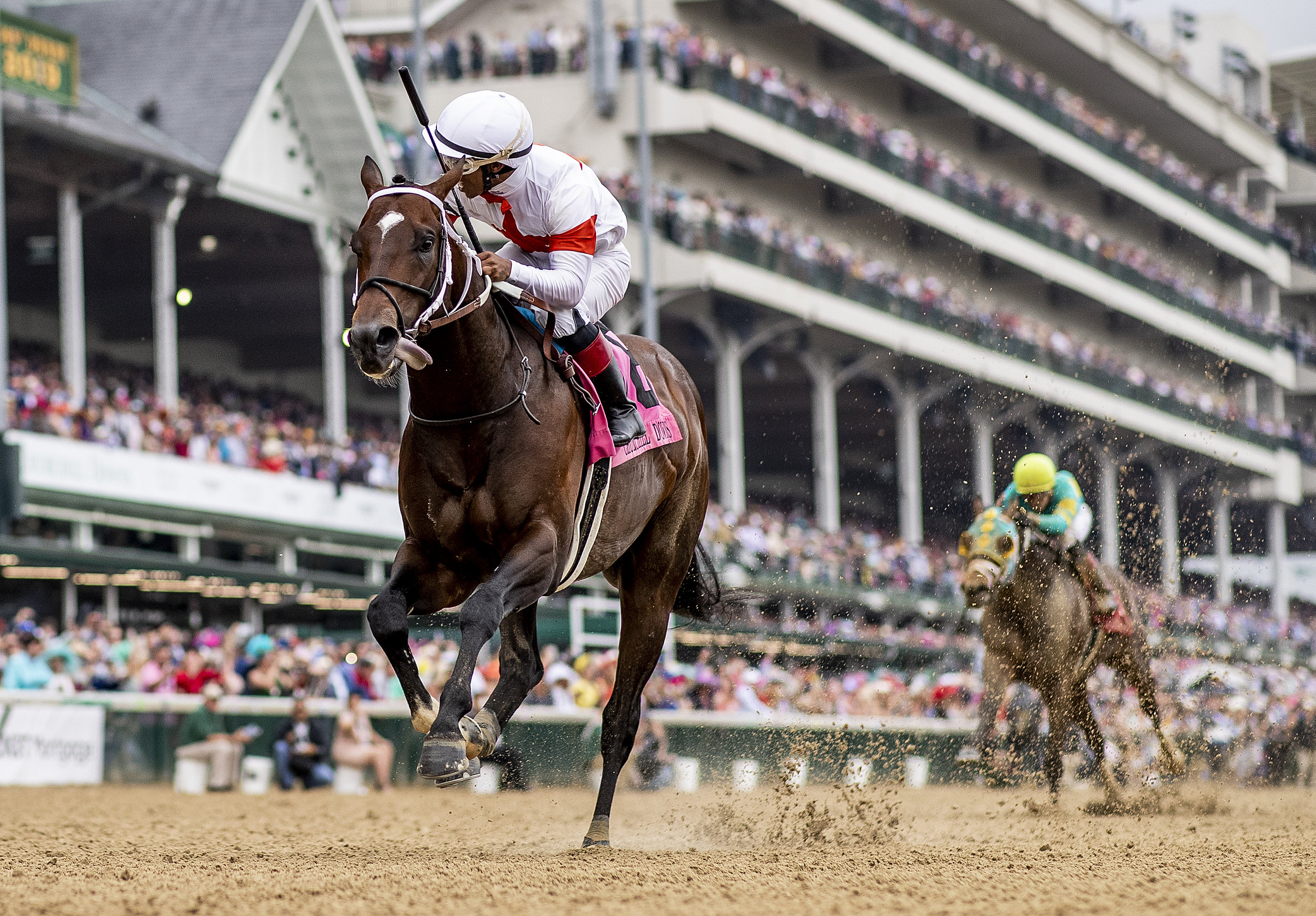Donato Lanni - X-Men Racing
/Article by Bill Heller
Thoroughbred bloodstock agent Donato Lanni cherished trips to the racetrack with his father, Giuseppe, who grew up in Italy and settled in Montreal, making a career as a construction contractor. He did well enough to pursue his passion. “My dad had a love and a desire for horses and horse racing,” Donato said. “He had some claiming horses.”
They were harness horses and Donato and his father shared evenings at Blue Bonnets Racetrack. “I grew up around it,” Donato said. ”As a kid, there’s something inside you that gets alerted. You catch the bug. I don’t think that’s a myth. I was eight or nine.
“Summertime, I got more involved. I spent all my time at Blue Bonnets going to the barn. I became a groom when I was 13 or 14. There I got to meet some really cool guys—some of the most legendary guys in harness racing: Andre LaChance, Sylvan Filion and Duncan MacTavish. Andre never talked and was not very pleasant to be around, but he was a hell of a horseman. He took a liking to me for some reason. I drove in qualifier (non-betting) races.” Donato was 16 when he bought his first horse.
Though Donato graduated from Concordia University in Montreal, he realized that he wanted to head south—far south. Taking advantage of a summer program at Concordia, Donato got a temporary visa to work in the United States, fixating on Kentucky.
“I didn’t see a future in Canada,” he said. “I asked, `How am I going to make a living with horses?’ I thought I had to go to Kentucky and see what it was like. I left Canada, knowing I was never going back.”
But he had no connections in America. “You take a chance and go to work,” Donato said.
And when you can’t find work? Running out of money, Donato bought a tent and camped out at the Kentucky Horse Park.
He got a huge break when he met John Cashman of Castleton Farm, one of the premier harness farms in North America. “I got a job with John,” Donato said. “He was very nice to me. I became the yearling manager in 1996. I was 25. I kept working. Grind, grind. Eventually doors open and you meet people.”
He counts himself lucky for meeting and then working for John “Big Johnny” Jones, the founder of Walmac International Farm in Lexington, where such super stallions as Nureyev and Alleged stood. Jones was also the founding partner of Four Star Sales. Initially, Donato landed a job with Walmac selling stallion services.
“If there was one person most responsible for any success that I had, it was Johnny Jones,” Donato told Murray Brown in his October 2021 story in Harness Racing Update. “Johnny was a noted bloodstock agent who ran Walmac International. It was from him that I learned my craft. He sold and bought horses. Eventually, so did I. While I was at Walmac, Johnny supported me on my first route towards becoming an American citizen.”
While with Walmac, Donato got to know Thoroughbred owner and movie theater magnate George Krikorian. He told Donato to let him know if one yearling caught his eye at any of the sales. One did—Starrer. She sold for $35,000 and won multiple Gr. 1 stakes on the way to becoming Donato’s first millionaire. In an article in Blood-Horse magazine, Krikorian said of Donato, “I don’t know anyone who had a better eye for horses than he does.”
Eventually, Donato worked for John Sikura’s Hill ‘n’ Dale Farm as director of Bloodstock Services, and became friends with Hall of Fame trainer Bob Baffert. “I met Bob 20 years ago at a sales,” Donato said. “He took me around and showed me what to look for. We’re still pretty close. I learned my craft through Bob Baffert. He’s a great horseman. He’s the best.”
Donato has paid Baffert back by selecting two Horses of the Year: Arrogate (2016) and Authentic (2020).
In 2006, Donato reconnected with Canadian horsemen, specifically trainer Kevin Attard. Attard trained Leonnatus Anteas, a yearling colt Donato picked out for Nob Hill Farm. The following year, Leonnatus Anteas won all three of his starts and was named Canadian Champion Two-Year-Old Colt. “That was the start of our relationship together,” Kevin said. “He sent me a couple horses over the years. For me to be associated with him has been a boost to my career. He respects me as a trainer.”
A few years back, Donato decided to start a new team. He convinced several Canadian horse owners and hockey fans to form X-Men Racing and then partnered with SF Racing and Madaket Stables. Lanni nicknamed the partnership “The Avengers. We put a fund together and bought a dozen horses,” Donato told Murray Brown in his story. “They’re all guys that are in the horse business—some of them with Standardbreds. But what they all have in common, besides being friends with me, is that they’re all lucky.”
One of the original dozen X-Men Racing horses was Moira. All the filly did in August was defeat colts while taking the $1 million Gr. 1 Queen’s Plate by seven lengths in track-record time. Less than a month later, their two-year-old filly Last Call won the Gr. 1 Natalma.
Through all the ups and downs, all the twists and turns of his colorful career, he never lost that feeling he first experienced when he went to the track with his father. “They’re majestic animals,” Donato said. “They’re beautiful to look at. You go work with them; it’s very challenging and it’s fun. We got started because we love the horse.”

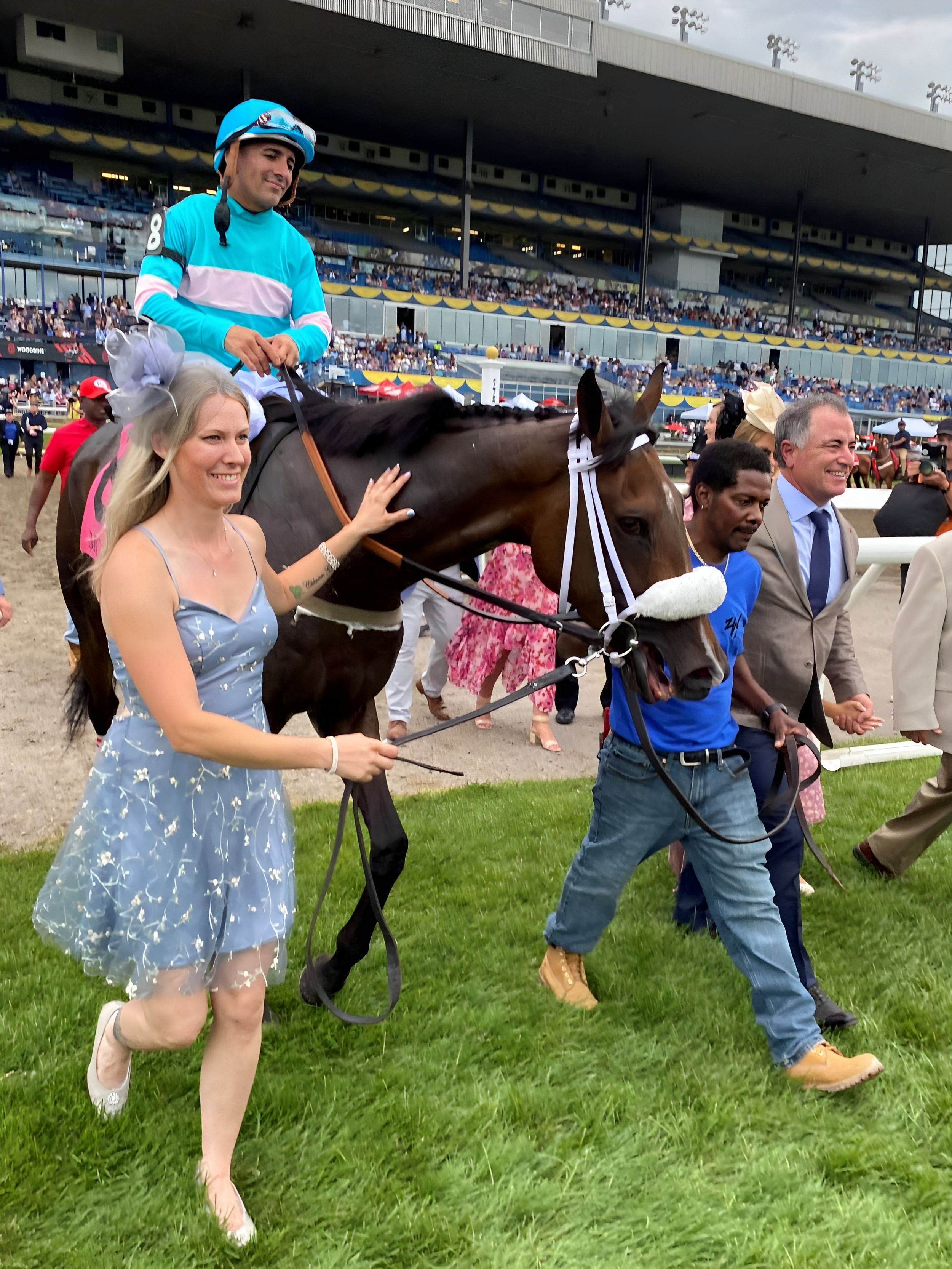
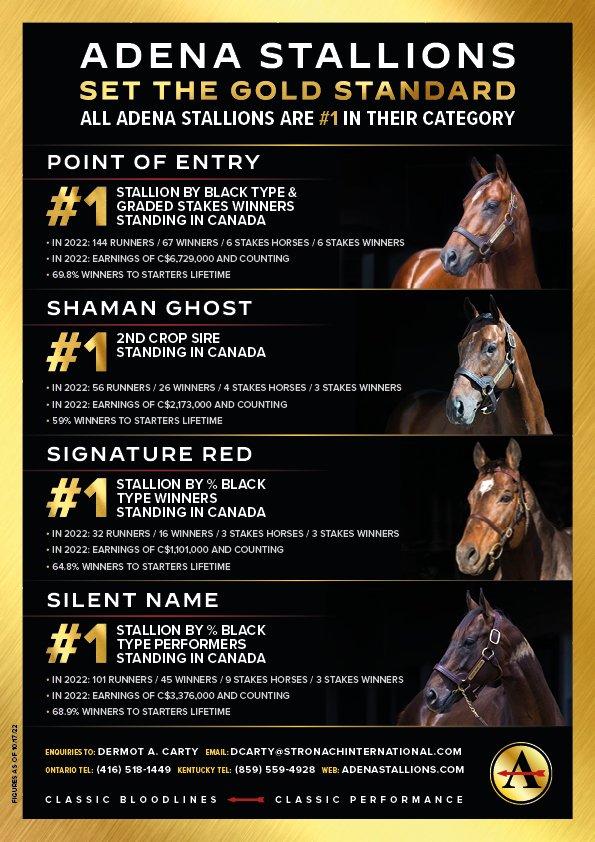





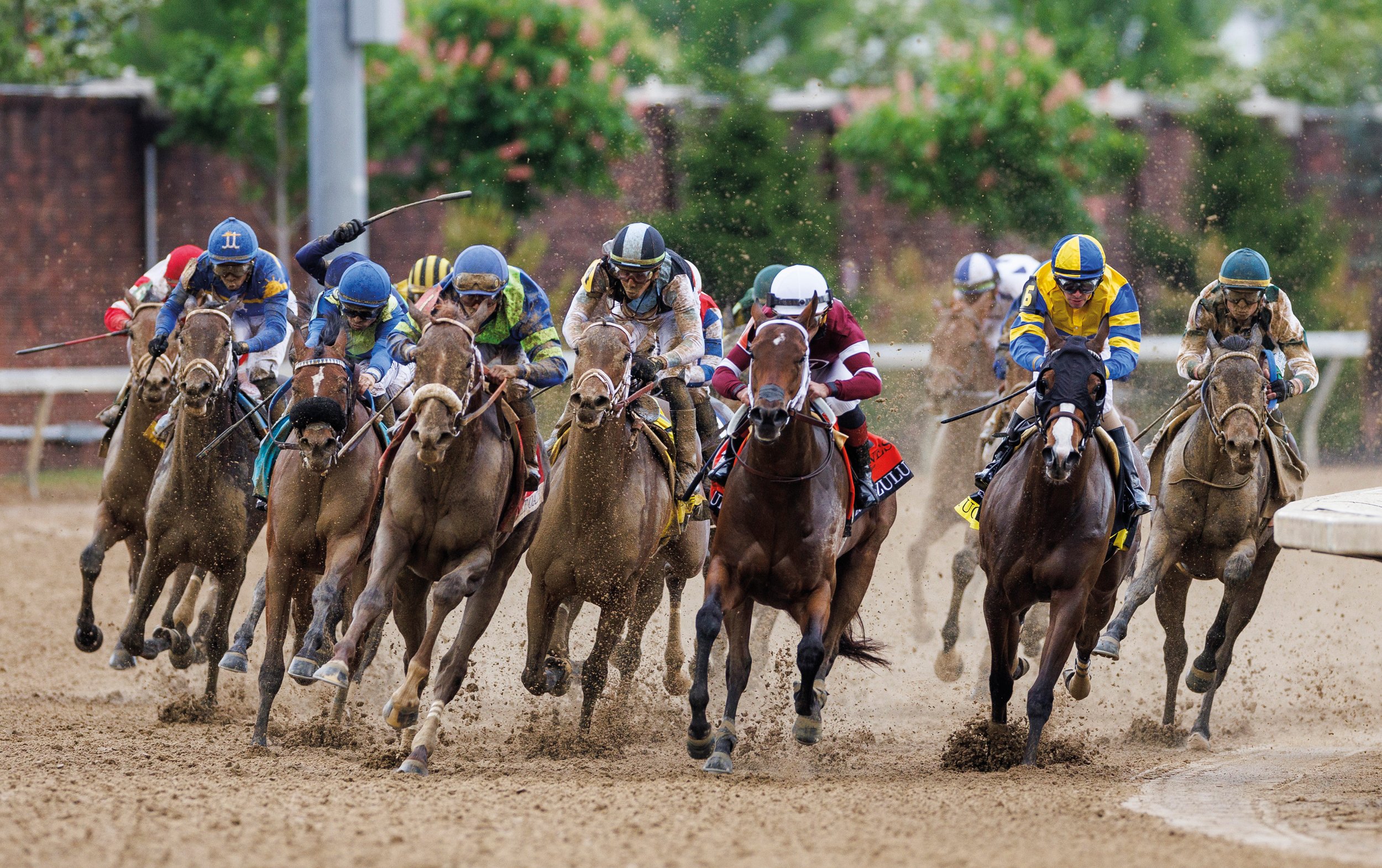








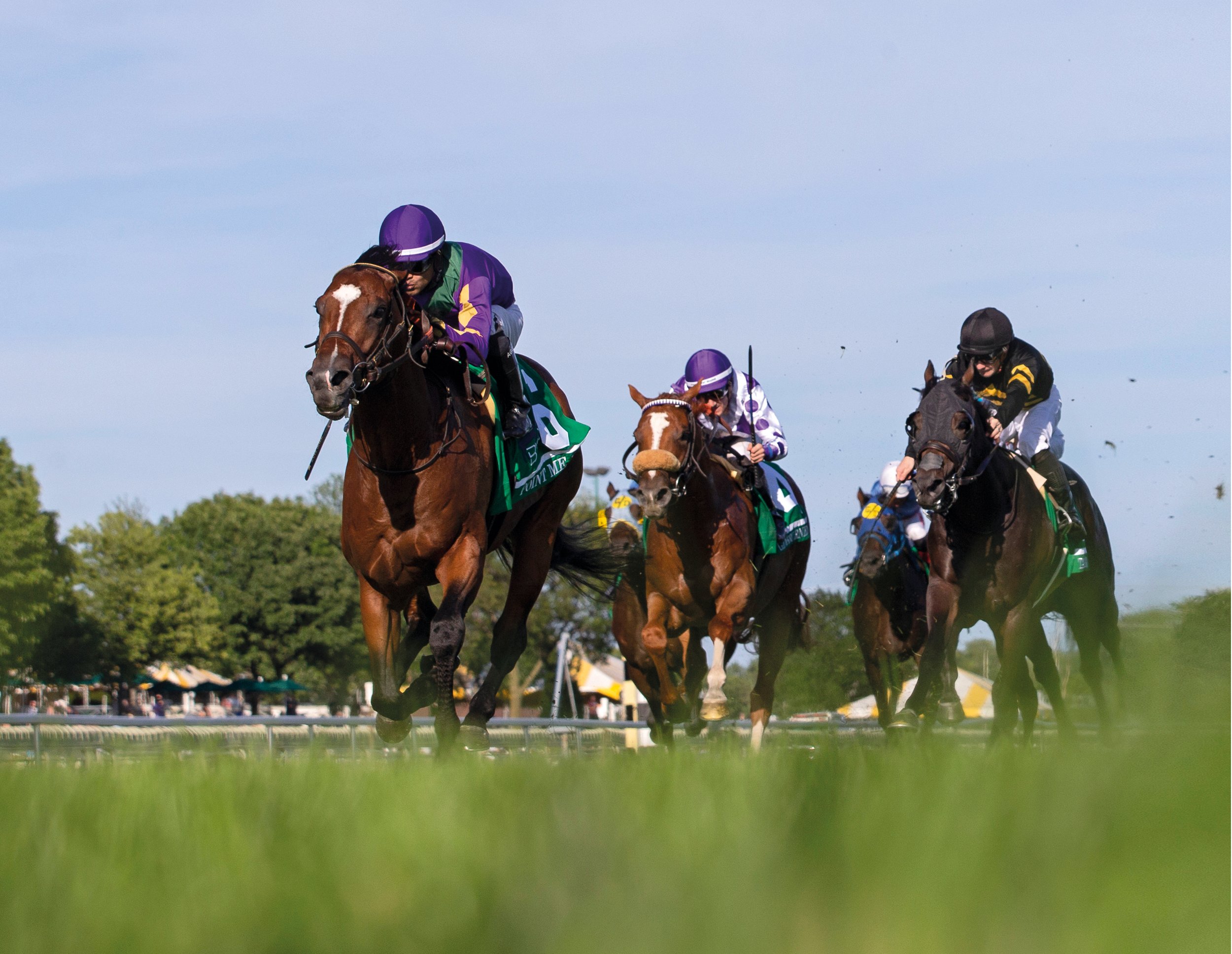

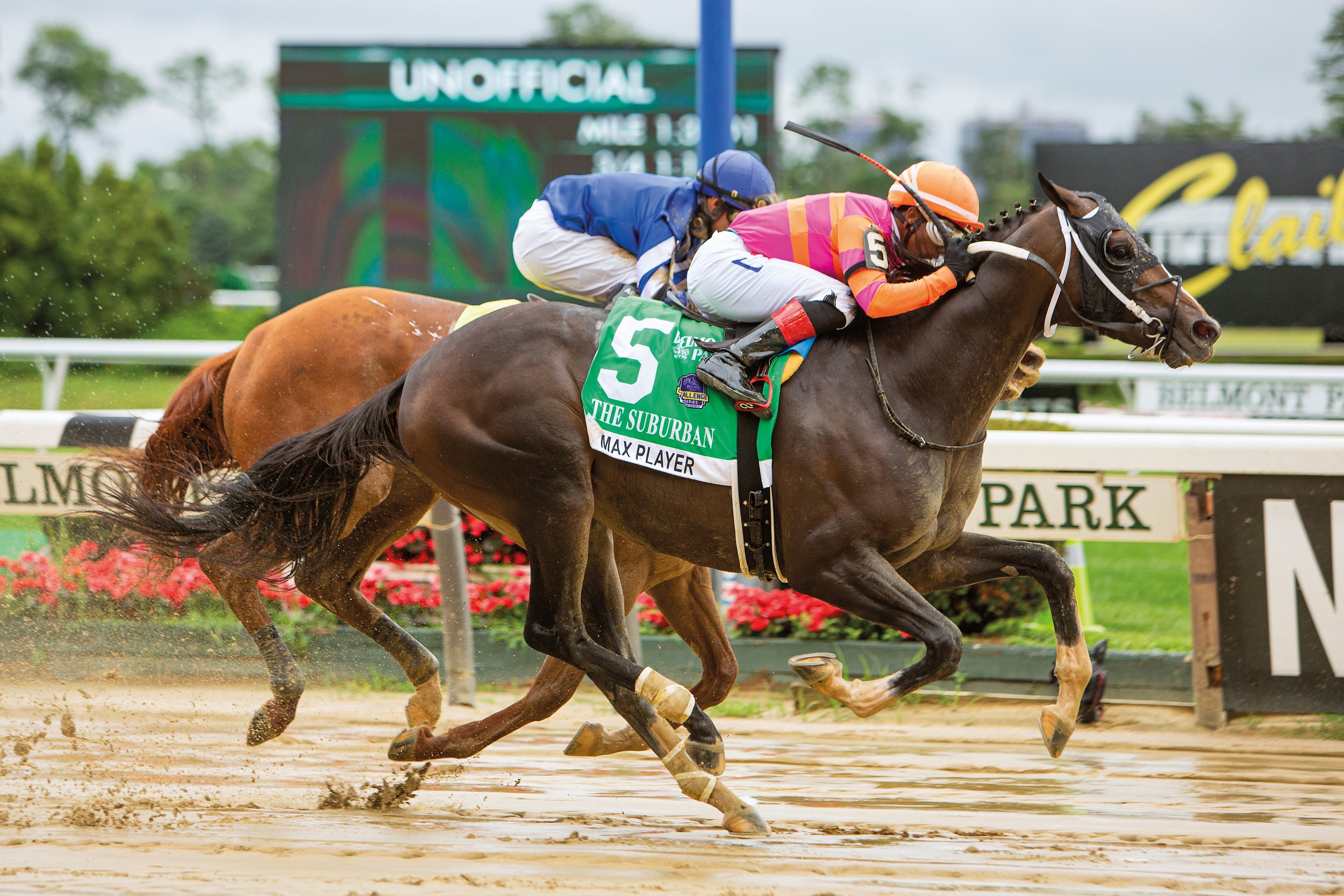




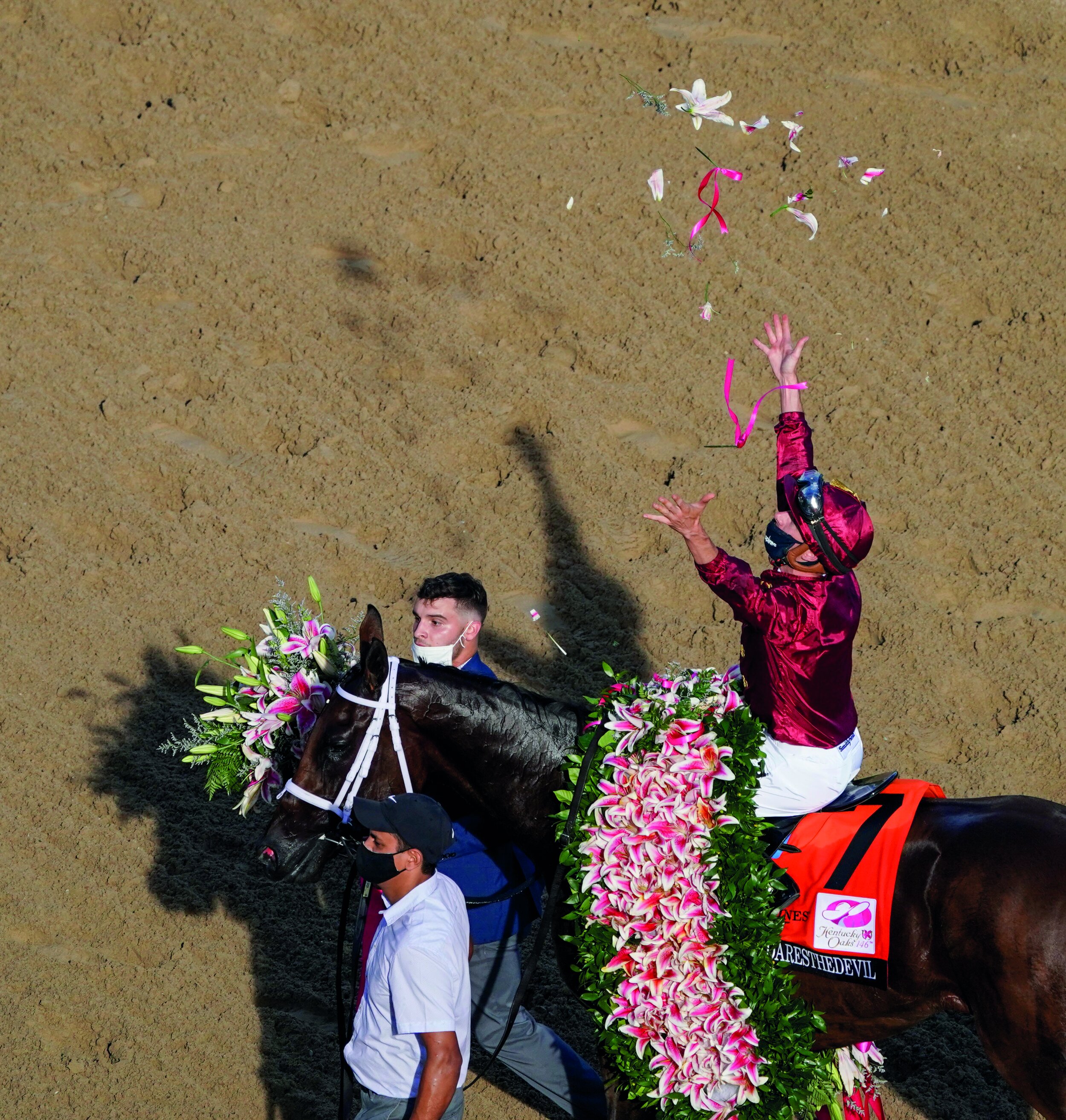



![Grade 1 OwnersBy Bill HellerGeorge Bolton (Nadal)Having campaigned such stars as two-time Horse of the Year Curlin, Lady Aurelia, My Miss Aurelia and The Factor did absolutely nothing to diminish George Bolton’s excitement for his latest home-run hitter, the undefeated three-year-old colt Nadal, whom he owns in partnership with Barry Lipman, Mark Mathiesen and Arthur Hoyeau.Unfortunately, on May 28, after working a half-mile at Santa Anita, Nadal suffered a colyndar fracture of his left front knee. Surgery was done with two screws were inserted, and Nadal will be able to start a new career as a stallion.Bolton is thankful that he saw all of Nadal’s four victories. Bolton sneaked into Oaklawn Park May 5 to watch Nadal improve his record to four-for-four by taking the second division of the rescheduled Gr1 Arkansas Derby for trainer Bob Baffert.“If they can really run, you get your ass there,” Bolton said. “I went to see every one of his races: his maiden, his San Vincente, Rebel and the Arkansas Derby. I was the only owner allowed in at Oaklawn. I snuck in. I had a mask on, but I wasn’t near anyone. I wanted to be with the horse. This is a special horse. I spent as much time at the barn after his race as before. I never missed Curlin, Lady Aurelia, The Factor and My Miss Aurelia. For me, you get the one that’s good, you go see him.”He was perfectly happy sharing the experience with his partners. “Celebrating by yourself isn’t much fun,” Bolton said. “You spread the risk. At the level I play at, when you’re buying, you have to do it as a partnership.”Bolton, who is the chief investment officer, portfolio manager and partner of WestEnd Capital Management in San Francisco, currently lives in Key Largo, Fla. He was born near Pimlico Race Course in Baltimore. “I grew up on a farm that my great, great aunt owned,” he said. “It was left to my father. He had a lot of jumpers. I grew up around it.”He graduated with honors from the University of Virginia in 1985 with a Bachelor of Arts degree in economics. He’s been an avid supporter of the Cavaliers, and rode the roller coaster of seeing Virginia become the first basketball No. 1 seed to lose to a No. 16 seed—the University of Maryland-Baltimore-County—in the NCAA Tournament, and winning the national championship the following season. “I’ve been swinging with the Cavaliers for a long time,” he said. “Virginia is a great place.”In college, Bolton had the good fortune of becoming friends with Bill Farish, whose father, Will, a former United States Ambassador to the United Kingdom, was building Lane’s End Farm in Kentucky.“Bill asked me to get involved in the business in 1989,” Bolton said. “I just got off to a good start. I didn’t have anybody marking up horses for me.”By 1989, Bolton had moved to San Francisco after working for Alex Brown & Sons in Baltimore. He continued to work for them in San Francisco, becoming the firm’s youngest managing partner in 1991. While leading institutional equity sales on the West Coast, he also separately managed accounts for high net-worth individuals. In 2004, Bolton left Alex Brown to become a partner and chief investment officer at WestEnd Capital Management.His ongoing success has allowed him to pursue his passion, where he’s become a major player. The Farishes brought Bolton in on a Miswaki filly named Exotic Moves. “We sold her after she won three races for a clean `double,’ and I was hooked,” he told the Paulick Report in a March 26, 2018 story.Curlin—the 2007 and 2008 Horse of the Year—took him to a whole new level, winning 11 of 16 starts and earning more than $10.5 million. No victory was more meaningful to him than Curlin’s come-again victory in the Preakness in Pimlico. “He got passed, and he came again,” Bolton said. “It was crazy. Most of the stretch, I thought he would lose.”Bolton’s My Miss Aurelia, the 2011 Champion Two-Year-Old Filly won the first six starts of her career and never finished out of the money in 11 starts, earning more than $2.5 million. The Factor, who continues a marvelous stallion career at Lane’s End, won six of 13 starts and more than $900,000. And Lady Aurelia, who won five of 10 starts and more than $800,00, captured the 2017 Gp1 King’s Stand Stakes at Royal Ascot, defeating 17 colts and three fillies.The international bloodstock agent Kerri Radcliffe hooked up with Bolton in 2018, buying yearlings for him in Australia, Europe and the United States. “George got in touch with me, and he said `I want you to buy for me,’” she said in a phone interview from Newmarket May 15.She purchased Nadal—a massive, muscular colt by Blame out of the Pulpit mare Ascending Angel bred by Sierra Farm—for $700,000 at the 2019 Gulfstream Park Two-Year-Olds-in-Training Sale that March for Bolton and another investor. The second investor bailed, and Bolton reached out to Lipman, Mathiesen and Hoyeau. Trainer Randy Bradshaw had originally purchased Nadal for $65,000 as a yearling. “When I was looking at him, Randy told me, `Kerri, this is a special horse,’” Radcliffe said. “He breezed like a monster, and when you saw his breeze and saw how big he was, you couldn’t quite figure out how that horse did that.”She named him for tennis star Rafael Nadal. Previously, she had named a colt Gronkowski for Ron Gronkowski, the All-Pro tight end of the New England Patriots.The equine Nadal had a rough time getting to the races. After beginning training at Los Alamitos, Baffert shipped Nadal to his barn at Santa Anita. On the van trip there, he kicked out of his stall and got his hind leg caught over the partition. “He flipped over,” Bolton said. “He cut himself on the back of his legs and had lacerations on his hocks. When we finally got him back, he wasn’t working well. We examined him again and gave him three months off. Sometimes, missing a two-year-old year helps as a three-year-old.”Nadal, who weighs in at 1,325 pounds, hasn’t done a thing wrong since returning to Baffert. “He’s a monster,” said Bolton, who compared him to former New York Giants tight end Jeremy Shockey and legendary Hall of Fame Buffalo Bills’ defensive end Bruce Smith. “It takes him a little while to get going, but his gait versus the other horses is exciting.”So are the results. “I had 68 texts right after the Arkansas Derby,” Bolton said. “Twenty-eight were from racing people; 40 of them were from Virginia and business people. All of them watched the Derby. It was great for the sport because it’s great that people know him.”And the tennis star he’s named for? “I’ve talked to his agent,” Bolton said. “He’s aware of the horse. I am a big fan of him as a person and as an athlete. I hope he’s enjoying the horse.”Bolton sure did. So did Nadal’s other owners: Lipman, whose family runs Lipman Family Farms—North America’s largest tomato grower with headquarters in Florida; Mathiesen, who owns a medical service company and was introduced to racing by his daughter Hannah; and Hoyeau, a French-based bloodstock agent. “These guys are guys you want to work with,” Bolton said.Chris Mara (Charlatan)New York Giants Senior Vice President Chris Mara’s passion for Thoroughbred racing goes back a long way. After purchasing a football franchise—which ultimately became the New York Giants—for all of $500 in 1925, his grandfather, Tim Mara, was a legal bookmaker at Belmont Park in the 1930’s. Tim passed both his Giants’ legacy and his love of Thoroughbreds onto his son Wellington, who in turn passed it onto Chris and his brothers.“He influenced my dad, and my dad influenced me,” Chris said in a phone interview. “The first Saturday in May, you couldn’t find my dad. He and my mom were at the Derby.”His father took him to Belmont Park for the first time when he was 10.Chris’ first trip to the Kentucky Derby was in 1982 when he, his parents and their dear friends the Rooneys watched Gato del Sol take the first leg of the Triple Crown. Chris would marry Kathleen Rooney, NFL pioneer Art Rooney’s granddaughter.Chris spent one summer, while in college at Boston College after transferring from Springfield, parking cars at one of the Rooneys’ racetracks, Yonkers Raceway. “I loved it,” Chris said. “It was a very interesting job to say the least. The guys were teaching me how to park cars. I parked one, and when I returned the car, the guy gave me a $20 tip. That was like 1977 or 1978. It was a lot of money. I told the guys, `They gave me $20.’ They said, “You [bleep, bleep].’”He came a long way from parking cars at that harness track. Some 35 years ago, he owned his first Thoroughbred, Itchy Hooves, with his mom. Fast forward a lot of years. After meeting Starlight Racing’s managing partner Jack Wolf in a Saratoga golf tournament hosted by basketball coach, Thoroughbred owner and long-time friend of the Mara family Rick Pitino in August 2012, Chris decided to make a serious commitment to Thoroughbred ownership by joining Starlight Racing.“I had been looking into it,” Chris said. “I sought out a couple different people and asked them what they thought I should do. They suggested various syndicates. I looked at all of them. Then I sat down with Donna Brothers (who works for Starlight Racing) at the Saratoga Sale. Then I met Jack Wolf on the golf course at Saratoga National.”That did it. Maybe Chris was feeling giddy—the after effect of a memorable year, which featured the New York Giants beating the previously unbeaten New England Patriots in the Super Bowl; and his daughter, Rooney Mara, for being nominated for an Academy Award for her title role in “The Girl with the Dragon Tattoo.”In a May 3rd Newsday story, Chris told Ed McNamara, “I sat down with Jack, and he asked me what I was going to bring to the table; and I answered, `Luck! We just won a Super Bowl, and my daughter is up for an Academy Award!’”That very afternoon, Chris and Starlight Racing’s two starters in the 2014 Kentucky Derby—General Rod and Intense Holiday—finished 11th and 12th, respectively, to California Chrome.In 2018, two months before the Kentucky Derby, Chris, through Starlight Racing, became a partner on both Justify and Audible, who finished first and third in the Run for the Roses. Then Justify became racing’s 13th Triple Crown champion and retired as the only undefeated Triple Crown champion.This summer, Chris and Starlight are back again as partners on undefeated Charlatan, who injured his ankle in early June and will be pointed to the Preakness Stakes, now the final leg of the Triple Crown this year. Charlatan’s ownership includes a bunch of other partners and partnership groups. “It’s a lot of people,” Wolf said May 14. “They’re really fine partners to have.”Charlatan was scheduled to test his three-for-three record in the rescheduled Belmont Stakes on June 20 as the first leg of an entirely rescheduled Triple Crown, to be cut back from a mile-and-a-half to a mile-and-an-eighth in this chaotic year defined by the coronavirus pandemic plaguing the entire globe.“Ever since I got involved with Starlight, the ultimate goal was to get a horse to the Derby,” Chris said. “With Charlatan, it’s just fun to have a horse like this.”Hearing that would make his grandfather smile.“I just love this sport,” Chris said. “I loved reading about my grandfather.”It’s hard for Chris to not think of his grandfather. “I walked into Belmont Park one day and there was a picture of my grandfather taking bets on the second floor,” Chris said.In the picture, Tim Mara is wearing a large, silver button stating he was a legal bookmaker. The button has been passed on to Chris. “I kept it in my pocket before the 2018 Kentucky Derby,” Chris said. “I didn’t wear it, but it worked. I will bring it with me for Charlatan.”Asked what he thought as Justify crossed the finish line to win the 2018 Kentucky Derby, Chris said, “I hope I didn’t lose all the winning tickets. I had a lot of them. My grandfather would have been proud, but he wouldn’t have been happy because he was the bookie.”Jack Knowlton (Tiz the Law)Can it be 17 years since Sackatoga Stable partners rolled into Churchill Downs on a rented yellow school bus and left with all the roses when Funny Cide became the first New York-bred to win the Kentucky Derby? Funny Cide added the 2003 Preakness Stakes for the stable, which returns to this year’s Triple Crown chase with another New York-bred: Gr1 Florida Derby winner Tiz the Law, whose four-for-five record stamps him as one of the top contenders for this year’s revamped Triple Crown; he’s now beginning with the mile-and-an-eighth Belmont Stakes on June 20.Tiz the Law’s co-owner Jack Knowlton, the managing partner of Sackatoga Stable, can’t wait to see Tiz the Law back in action off his impressive victory in the Florida Derby March 28. “The good news is this horse has proven twice he could win off layoffs,” Knowlton said.It was Knowlton, who runs a health consulting firm in Saratoga Springs and created Sackatoga Stable by a seemingly innocuous question to his long-time buddies at a 1995 Memorial Day barbecue in Sackets Harbor on the shore of Lake Ontario: “Do you want to take a shot?”They did, and now they’re taking another with a whole different group of investors who comprise Sackatoga Stable—a name derived from his hometown, Sackets Harbor and Saratoga, where Knowlton works and lives. “Our merry band of 10 people, including five guys I went to school with, was a very closely held group,” Knowlton said. “After Funny Cide retired in 2007, it made sense to try to expand the horizons. We formed a management entity, Sackatoga Stable, Ltd. Then we formed 2 LLCs after that.”Only Knowlton and Lou Titterton remain in Sackatoga, which now numbers 50 people. There are 35 partners on Tiz the Law. “What’s great is we have numerous people who have been with me for 10 to 15 years,” Knowlton said. “We’ve vastly expanded geographically.”He has partners from California, Colorado, Delaware, Florida, Georgia, Maryland, Massachusetts, Michigan, New York of course, South Carolina and Texas. “It’s much more challenging logistically to put on events for 60 to 80 people,” Knowlton said. “For the Holy Bull, we had four suites at Gulfstream Park. We had a crew. We’ve got a lot of people who love the game.”It’s hard to imagine anyone loving horse racing as much as Knowlton, who had previously raced Standardbreds at Saratoga Harness across the street from Saratoga Race Course with Frank Coppola—a top driver and trainer at Saratoga Harness. They called their stable The Breakfast Club because they’d go out for breakfast together on Saturday mornings after their horses finished training. They did well, especially with Sunset Blue, who won more than $270,000 from 33 victories, 33 seconds and 32 thirds from 209 starts over seven years; and Paulas Big Guy, who posted 49 wins, 52 seconds and 35 thirds in 259 starts. The Breakfast Club owned both horses for part of their careers.A labor dispute and a horsemen’s strike at Saratoga Harness in 1994 pushed Knowlton out of harness racing. The following May, he popped that innocuous question to his buddies at a barbecue and the rest is history—wonderful history for Knowlton and his partners.Sackatoga Stable’s first horse was Sackets Six, a New York-bred who cost $22,000 and earned $111,730 under the guidance of trainer Tim Kelly. Four years later, they hired Tagg. Their first horse with Tagg, Bail Money, was purchased for $40,000 and earned $108,665 before he was claimed for $62,500.When Funny Cide lost his Triple Crown bid by finishing third to Empire Maker in the sloppy Belmont Stakes, Knowlton simply shrugged his shoulders and kind of smiled—a classy gesture by a classy man seen on national TV and in many pictures.Knowlton has used Funny Cide’s success to help the sport he loves by doing anything he can. He served as a member of the National Thoroughbred Racing Association’s Jockey Insurance Working Group; with the Ad Hoc Committee on the Future of Racing in New York State; with the New York State’s Task Force on Retired Race Horses; and as a member of the New York State Gaming Commission’s Aftercare Summits in Saratoga Springs.After Tiz the Law’s victory in the Florida Derby, Knowlton was doing a TV interview with Kenny Rice. “The second half of the talk was about Funny Cide,” Knowlton said. “The school bus—it never gets old. We became everybody’s darling. It was a feel-good story when the county needed a feel-good story.”Sounds like today, doesn’t it?](https://images.squarespace-cdn.com/content/v1/517636f8e4b0cb4f8c8697ba/1591896315852-GUMB2TW62O5J70FNKYF7/z200502_ArkansasDerbyDay_Manning_2438+%281%29.JPG)











